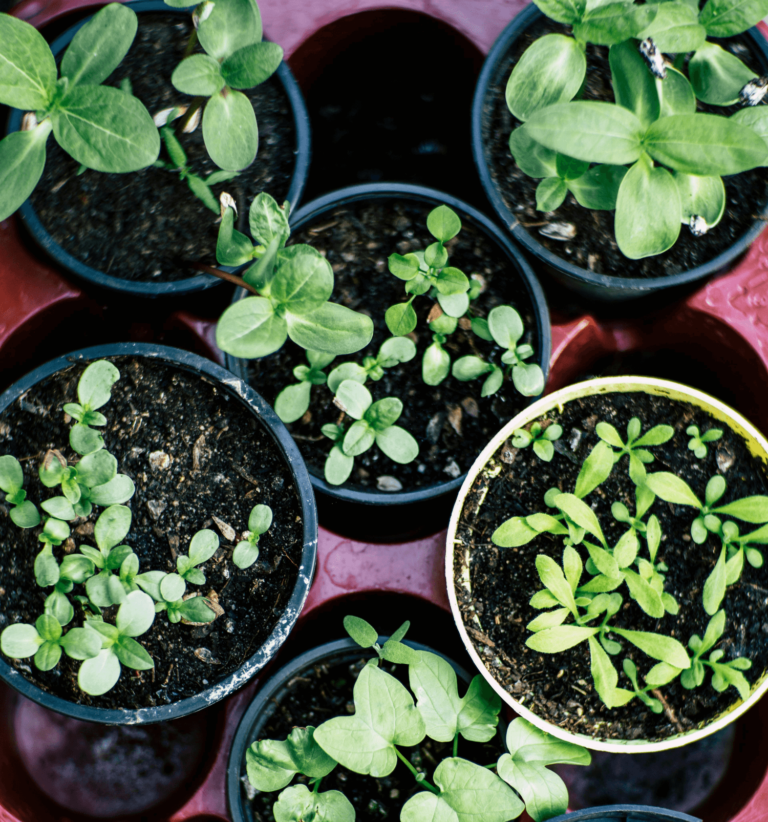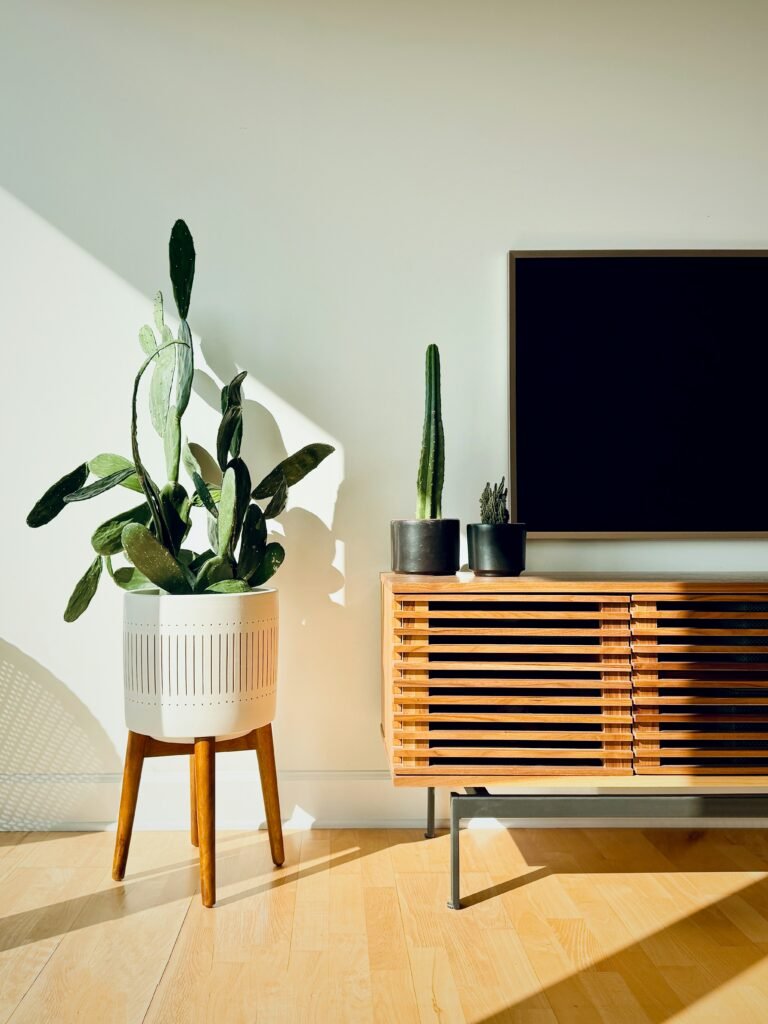Grow fresh herbs indoors and spice up your meals instantly. Expert gardeners from the National Gardening Association say that indoor herb gardens boost flavor and learning. If you lack outdoor space, an herb garden on your sunny windowsill or cozy kitchen corner is a great option. Follow this simple guide to select herbs, care for them, and use them in tasty recipes.
Why Grow Herbs Indoors?
Indoor herb gardening gives you many benefits. Enjoy fresh flavors and learn new skills while you create a green oasis at home.
Fresh Flavors Year-Round
- Get fresh herbs any time of the year
- Grow unusual herbs that stores may not have
Convenience
- Keep herbs close when you cook
- Save money by using herbs grown by you
Aromatherapy
- Enjoy the pleasant scents of your herbs
- Some herbs can boost your mood and calm you
Educational
- Teach children about plant care and growth
- Explore different herb types and their uses in food
Aesthetic Appeal
- Add a splash of green to your space
- Use herbs as part of your home decor
Pro Tip: Start small with a few herb varieties and add more as you learn their needs.
Choosing the Best Herbs for Indoor Growing
Not every herb does well indoors. These choices work best when grown inside.
Basil
- Needs lots of sunlight
- Great for Italian and Thai dishes
- Try Sweet Basil, Thai Basil, or Lemon Basil
Chives
- Are easy to care for
- Add a mild onion taste to food
- Snip what you need and they grow back
Mint
- Grows fast; best kept in its own pot
- Use varieties like Peppermint, Spearmint, or Chocolate Mint
- Perfect for teas, cocktails, and salads
Parsley
- Choose curly or flat-leaf parsley
- Tolerates lower light levels
- Rich in vitamins and great for garnish
Rosemary
- Needs good drainage and air flow
- Perfect for roasts and Mediterranean dishes
- You can shape it into neat forms
Thyme
- Grows compactly, which suits small spaces
- Drought-tolerant and low-maintenance
- Key in many French recipes
Cilantro
- Grows quickly but does not last long
- Favored in Mexican, Indian, and Asian recipes
- Plant seeds regularly for a constant supply
Pro Tip: Pick herbs that match your favorite meals and the light you have at home.
Essential Care Tips for Indoor Herbs
You need to care for your herbs to help them grow strong. Follow these simple tips.
Light Requirements
- Most herbs need at least 6 hours of sun daily
- South-facing windows work best
- Use extra grow lights if needed
Watering
- Water when the top inch of soil is dry
- Make sure pots drain well to stop root rot
- Avoid wetting the leaves to keep fungi away
Soil and Fertilizer
- Use a mix that drains well and suits herbs
- Fertilize once a month with a balanced liquid fertilizer
- Do not over-fertilize, or herbs may lose flavor
Temperature and Humidity
- Most herbs do well at 65-70°F (18-21°C)
- Add humidity by placing pots on a pebble tray with water
- Keep them away from drafts or direct heat
Pruning and Harvesting
- Pinch back tips to spur bushy growth
- Take no more than one-third of the plant at a time
- Cut with clean, sharp scissors
Pro Tip: Rotate your herb pots one-quarter turn weekly so every side gets light.
Container Options for Indoor Herbs
Good containers help your herbs thrive and look nice in your kitchen.
Traditional Pots
- Terracotta pots let air reach the roots
- Ceramic pots hold moisture and look great
- Plastic pots are light and low-cost
Windowsill Planters
- Narrow pots that fit on windowsills
- You make the most of small spaces
Vertical Planters
- Wall-mounted or hanging systems save space
- Great for small kitchens or apartments
Self-Watering Containers
- Have a water reservoir that keeps plants moist
- Ideal for busy people or frequent travelers
Upcycled Containers
- Use mason jars, tin cans, or teacups
- Add a personal and fun touch to your garden
Pro Tip: Always ensure your container has drainage holes. Place a saucer underneath to catch extra water.
Creative Ways to Display Your Indoor Herb Garden
Your herb garden can enhance your kitchen decor and add charm.
Herb Wall
- Hang a pegboard or grid for your pots
- Create a living wall that also works as kitchen art
Floating Shelves
- Place shelves near a sunny window
- Mix herb pots with other decor pieces
Hanging Baskets
- Hang baskets from the ceiling or a rod
- Perfect for trailing herbs such as oregano or thyme
Kitchen Island Centerpiece
- Arrange your pots on a decorative tray
- Create a useful and charming focal point
Window Box Inside
- Install an indoor window box for a cozy garden look
- Make the best use of your windowsill
Pro Tip: Use pots with similar colors or styles to create a unified display.
Troubleshooting Common Indoor Herb Issues
Even with good care, you may face some problems. Try these fixes for common issues.
Leggy Growth
- Cause: Not enough light
- Fix: Move your plant to a sunnier location or add extra lamps
Yellowing Leaves
- Cause: Overwatering or lack of nutrients
- Fix: Adjust your watering routine or add fertilizer
Pest Infestations
- Pests: Aphids, spider mites, fungus gnats
- Fix: Use insecticidal soap or neem oil and improve air flow
Wilting
- Cause: Too little water or root rot
- Fix: Water properly and make sure your pot drains well
Leaf Spots
- Cause: Fungal or bacterial issues
- Fix: Improve air circulation and avoid wetting leaves
Pro Tip: Check your herbs often for signs of stress. Early fixes can save your plants.
Incorporating Fresh Herbs into Your Cooking
Now for the best part – using your fresh herbs in the kitchen!
Herb-Infused Oils and Vinegars
- Steep herbs in oil or vinegar for tasty dressings
- Great for salads, marinades, and finishing touches
Compound Butters
- Mix chopped herbs into softened butter
- Spread on bread or top your steaks and veggies
Fresh Herb Sauces
- Create sauces like pesto, chimichurri, or gremolata
- Add bright flavors to pasta, grilled meats, or roasted veg
Herbal Teas and Infusions
- Brew teas with mint, lemon balm, or chamomile
- Make cool drinks with herb-infused water
Garnishes and Finishing Touches
- Sprinkle chopped herbs on your dish before serving
- Use whole leaves as a pretty garnish on plates or cocktails
Pro Tip: Try different herb mixes to find your own flavor blends. Keep a note of what works best.
Preserving Your Herb Harvest
If your herbs grow quickly, try these easy ways to save them.
Drying
- Hang small bunches upside down in a dry area
- Use dried herbs in teas, spice mixes, or winter recipes
Freezing
- Chop herbs and freeze them in ice cube trays with water or oil
- Add them later to soups, stews, or sauces
Herb Salt
- Mix chopped herbs with coarse salt
- Use it as a rub, finishing salt, or cocktail rim
Herb Butter Logs
- Mix herbs into butter and form logs, then freeze
- Slice rounds off when you need a burst of flavor
Pro Tip: Mark preserved herbs with the date and type. This will help you use them while they are fresh.
Conclusion: Your Culinary Herb Paradise Awaits
Grow an indoor herb garden and bring a burst of flavor to your meals. Choose herbs that suit your kitchen, care for them well, and enjoy their fresh taste. Explore container ideas, fix problems fast, and try new recipes with your herbs. With a bit of care, your herb garden will provide endless fresh flavor. Happy growing and bon appétit!
Ready to add green to your indoor space? Transform your kitchen with this stylish Herb Garden Planter on Amazon:
As an Amazon Associate, I earn from qualifying purchases.
Frequently Asked Questions
How do I start my indoor herb garden?
Choose a bright spot with at least 6 hours of sun. Use a well-draining potting mix and start with easy herbs like basil and mint.
How often should I water my herbs?
Water when the top inch of soil feels dry. Avoid overwatering to keep the roots healthy.
Can I grow herbs in low light?
Yes, some herbs like parsley do well in low light. You can also add a grow light to help them thrive.
Explore this topic: Garden
Last updated on August 7, 2025








